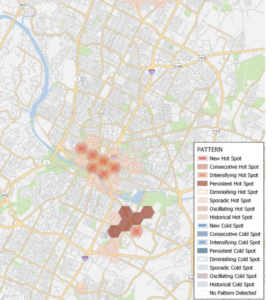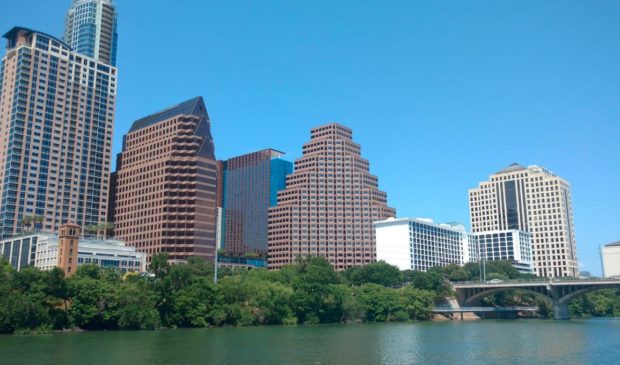In Austin, violent crime is down but hot spots persist
Tuesday, March 5, 2019 by
Jessi Devenyns As Austin continues to experience explosive growth as it transforms into one of the nation’s larger metro areas, concerns about big-city-sized crime abound.
However, despite meteoric growth, overall violent crime is down. Ron MacKay, the crime analysis division manager with APD, came to the March 4 meeting of the Public Safety Commission to present the public safety statistics from the last calendar year. He began with a cheerful preamble, explaining that in 2018, overall crime was down 6 percent when compared with 2017 data.
At the same time, “this was our third-highest year for homicide,” he told commissioners, citing trend data going back to 2009. Similarly, bank robberies, auto theft and aggravated assaults increased from 2017 to 2018.

Other categories of crime experienced reductions, including sexual assault, non-family violence aggravated assault, burglaries, and robberies of individuals.
“Burglary is tending to be a downward-trending crime in Austin and that’s a good thing,” said MacKay. Residential burglaries were down 10 percent and non-residential burglaries were up 5 percent when compared to 2017, but still down 16 percent from the 10-year high in 2009.
For all these crimes, there are persistent hot spots of activity. For years, downtown, Rundberg Lane and Lamar Boulevard, and Riverside Drive and Wickersham Lane have been areas that experience crime at a higher rate than other parts of town.
“It seems like you have a lot of activity in the Rundberg area. What are y’all doing out there to combat that?” Commissioner Sam Holt asked.
APD Chief of Staff Troy Gay explained that the Austin Police Department has dedicated teams of officers to the area and they work for three to six months before rotating elsewhere. The presence of consistent patrols has prompted “significant changes” in the Rundberg-Lamar area, according to Gay, though he acknowledged that the area is still a focal point for the division.
Gay also noted that APD is continuously looking for a grant that would allow the department to deploy more personnel and services in the area, much as they have done in the Riverside area.
In tandem with observations that the hot spots have been historically persistent due to their economic profiles, Commissioner Ed Scruggs remarked, “A lot of the hot spots on that map seem to be locations where we have a significant homeless population.”
Even with increases in several crime categories, the number of calls per capita is decreasing along with the overall number of incidents responded to by patrol officers.
Commissioner Daniela Nuñez said that while this data is valuable, it would be even more beneficial if it were transmitted to the community, and especially to those areas most affected by crime. “The community is hungry for this kind of data,” she said.
Download (PDF, 2.06MB)
Photo by MX [CC BY-SA 4.0], via Wikimedia Commons; map courtesy of the city of Austin.
The Austin Monitor’s work is made possible by donations from the community. Though our reporting covers donors from time to time, we are careful to keep business and editorial efforts separate while maintaining transparency. A complete list of donors is available here, and our code of ethics is explained here.
You're a community leader
And we’re honored you look to us for serious, in-depth news. You know a strong community needs local and dedicated watchdog reporting. We’re here for you and that won’t change. Now will you take the powerful next step and support our nonprofit news organization?




